SLVS905A December 2008 – October 2017 TLV431A-Q1 , TLV431B-Q1
PRODUCTION DATA.
- 1 Features
- 2 Applications
- 3 Description
- 4 Revision History
- 5 Pin Configuration and Functions
- 6 Specifications
- 7 Parameter Measurement Information
- 8 Detailed Description
- 9 Applications and Implementation
- 10Power Supply Recommendations
- 11Layout
- 12Device and Documentation Support
- 13Mechanical, Packaging, and Orderable Information
Package Options
Mechanical Data (Package|Pins)
- DBV|5
Thermal pad, mechanical data (Package|Pins)
Orderable Information
6 Specifications
6.1 Absolute Maximum Ratings
over operating free-air temperature range (unless otherwise noted)(1)| MIN | MAX | UNIT | |||
|---|---|---|---|---|---|
| VKA | Cathode voltage(2) | 7 | V | ||
| IK | Continuous cathode current range | –20 | 20 | mA | |
| Iref | Reference current range | –0.05 | 3 | mA | |
| Operating virtual junction temperature | 150 | °C | |||
| Tstg | Storage temperature range | –65 | 150 | °C | |
(1) Stresses beyond those listed under Absolute Maximum Ratings may cause permanent damage to the device. These are stress ratings only, and functional operation of the device at these or any other conditions beyond those indicated under Recommended Operating Conditions is not implied. Exposure to absolute-maximum-rated conditions for extended periods may affect device reliability.
(2) Voltage values are with respect to the anode terminal, unless otherwise noted.
6.2 ESD Ratings
| VALUE | UNIT | |||
|---|---|---|---|---|
| V(ESD) | Electrostatic discharge | Human-body model (HBM), per AEC Q100-002(1) | ±2000 | V |
| Charged-device model (CDM), per AEC Q100-011 | ±1000 | |||
(1) AEC Q100-002 indicates that HBM stressing shall be in accordance with the ANSI/ESDA/JEDEC JS-001 specification.
6.3 Thermal Information
| THERMAL METRIC(1) | TLV431x | UNIT | ||
|---|---|---|---|---|
| DBV | DBZ | |||
| 5 PINS | 3 PINS | |||
| RθJA | Junction-to-ambient thermal resistance | 206 | 206 | °C/W |
| RθJC(top) | Junction-to-case (top) thermal resistance | 131 | 76 | |
(1) For more information about traditional and new thermal metrics, see the Semiconductor and IC Package Thermal Metrics application report.
6.4 Recommended Operating Conditions
over operating free-air temperature range (unless otherwise noted)| MIN | MAX | UNIT | |||
|---|---|---|---|---|---|
| VKA | Cathode voltage | VREF | 6 | V | |
| IK | Cathode current | 0.1 | 15 | mA | |
| TA | Operating free-air temperature range | TLV431x-Q1 | –40 | 125 | °C |
6.5 Electrical Characteristics for TLV431A-Q1
at 25°C free-air temperature (unless otherwise noted)| PARAMETER | TEST CONDITIONS | TLV431AQ | UNIT | |||||
|---|---|---|---|---|---|---|---|---|
| MIN | TYP | MAX | ||||||
| VREF | Reference voltage | VKA = VREF, IK = 10 mA |
TA = 25°C | 1.228 | 1.24 | 1.252 | V | |
| TA = full range(1)
(see Figure 22) |
1.209 | 1.271 | ||||||
| VREF(dev) | VREF deviation over full temperature range(2) | VKA = VREF, IK = 10 mA(1)
(see Figure 22) |
11 | 31 | mV | |||
 |
Ratio of VREF change in cathode voltage change | VKA = VREF to 6 V, IK = 10 mA (see Figure 23) |
–1.5 | –2.7 | mV/V | |||
| Iref | Reference terminal current | IK = 10 mA, R1 = 10 kΩ, R2 = open (see Figure 23) |
0.15 | 0.5 | µA | |||
| Iref(dev) | Iref deviation over full temperature range(2) | IK = 10 mA, R1 = 10 kΩ, R2 = open(1) (see Figure 23) |
0.15 | 0.5 | µA | |||
| IK(min) | Minimum cathode current for regulation | VKA = VREF (see Figure 22) | 55 | 100 | µA | |||
| IK(off) | Off-state cathode current | VREF = 0, VKA = 6 V (see Figure 24) | 0.001 | 0.1 | µA | |||
| |zKA| | Dynamic impedance(3) | VKA = VREF, f ≤ 1 kHz, IK = 0.1 mA to 15 mA (see Figure 22) |
0.25 | 0.4 | Ω | |||
(1) Full temperature range is –40°C to 125°C for TLV431x-Q1.
(2) The deviation parameters VREF(dev) and Iref(dev) are defined as the differences between the maximum and minimum values obtained over the rated temperature range. The average full-range temperature coefficient of the reference input voltage, αVREF, is defined as:

where ΔTA is the rated operating free-air temperature range of the device.
αVREF can be positive or negative, depending on whether minimum VREF or maximum VREF, respectively, occurs at the lower temperature.

where ΔTA is the rated operating free-air temperature range of the device.
αVREF can be positive or negative, depending on whether minimum VREF or maximum VREF, respectively, occurs at the lower temperature.
(3) The dynamic impedance is defined as 
spacer
When the device is operating with two external resistors (see Figure 23), the total dynamic impedance of the circuit is defined as:


spacer
When the device is operating with two external resistors (see Figure 23), the total dynamic impedance of the circuit is defined as:

6.6 Electrical Characteristics for TLV431B-Q1
at 25°C free-air temperature (unless otherwise noted)| PARAMETER | TEST CONDITIONS | TLV431BQ | UNIT | |||||
|---|---|---|---|---|---|---|---|---|
| MIN | TYP | MAX | ||||||
| VREF | Reference voltage | VKA = VREF, IK = 10 mA |
TA = 25°C | 1.234 | 1.24 | 1.246 | V | |
| TA = full range(1)
(see Figure 22) |
1.221 | 1.265 | ||||||
| VREF(dev) | VREF deviation over full temperature range(2) | VKA = VREF , IK = 10 mA(1)
(see Figure 22) |
11 | 31 | mV | |||
 |
Ratio of VREF change in cathode voltage change | VKA = VREF to 6 V, IK = 10 mA (see Figure 23) |
–1.5 | –2.7 | mV/V | |||
| Iref | Reference terminal current | IK = 10 mA, R1 = 10 kΩ, R2 = open (see Figure 23) |
0.1 | 0.5 | µA | |||
| Iref(dev) | Iref deviation over full temperature range(2) | IK = 10 mA, R1 = 10 kΩ, R2 = open (see Figure 23) |
0.15 | 0.5 | µA | |||
| IK(min) | Minimum cathode current for regulation | VKA = VREF (see Figure 22) | 55 | 100 | µA | |||
| IK(off) | Off-state cathode current | VREF = 0, VKA = 6 V (see Figure 24) | 0.001 | 0.1 | µA | |||
| |zKA| | Dynamic impedance(3) | VKA = VREF, f ≤ 1 kHz, IK = 0.1 mA to 15 mA (see Figure 22) |
0.25 | 0.4 | Ω | |||
(1) Full temperature range is –40°C to 125°C for TLV431x-Q1.
(2) The deviation parameters VREF(dev) and Iref(dev) are defined as the differences between the maximum and minimum values obtained over the rated temperature range. The average full-range temperature coefficient of the reference input voltage, αVREF, is defined as:

where ΔTA is the rated operating free-air temperature range of the device.
αVREF can be positive or negative, depending on whether minimum VREF or maximum VREF, respectively, occurs at the lower temperature.

where ΔTA is the rated operating free-air temperature range of the device.
αVREF can be positive or negative, depending on whether minimum VREF or maximum VREF, respectively, occurs at the lower temperature.
(3) The dynamic impedance is defined as 
spacer
When the device is operating with two external resistors (see Figure 23), the total dynamic impedance of the circuit is defined as:


spacer
When the device is operating with two external resistors (see Figure 23), the total dynamic impedance of the circuit is defined as:

6.7 Typical Characteristics
Operation of the device at these or any other conditions beyond those indicated in the Recommended Operating Conditions table are not implied.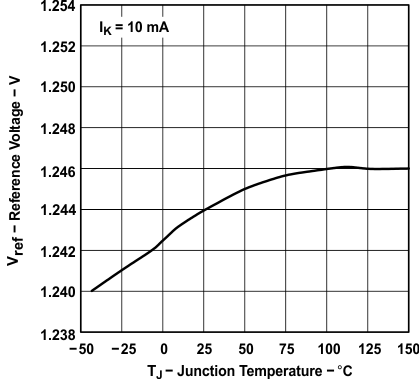 Figure 1. Reference Voltage vs
Figure 1. Reference Voltage vs Junction Temperature
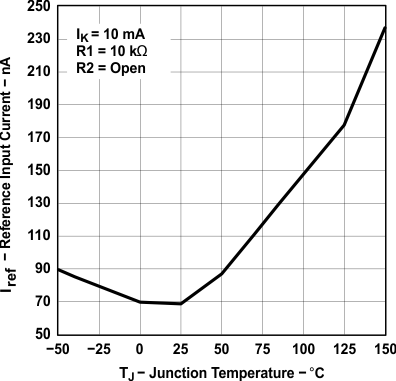 Figure 3. Reference Input Current vs
Figure 3. Reference Input Current vs Junction Temperature (for TLV431B)
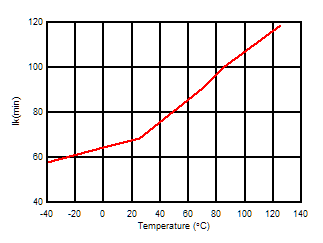 Figure 5. Minimum Cathode Current (µA) vs Temperature
Figure 5. Minimum Cathode Current (µA) vs Temperature
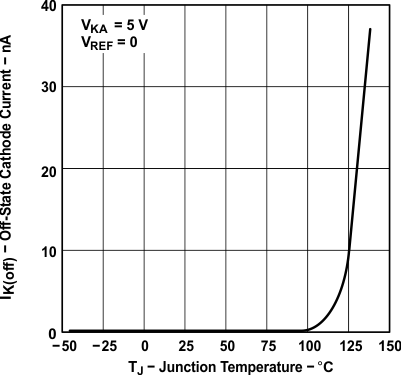 Figure 7. Off-State Cathode Current vs
Figure 7. Off-State Cathode Current vs Junction Temperature for TLV431A
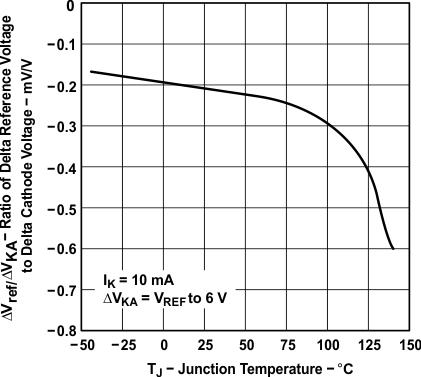 Figure 9. Ratio of Delta Reference Voltage to
Figure 9. Ratio of Delta Reference Voltage toDelta Cathode Voltage vs
Junction Temperature for TLV431A
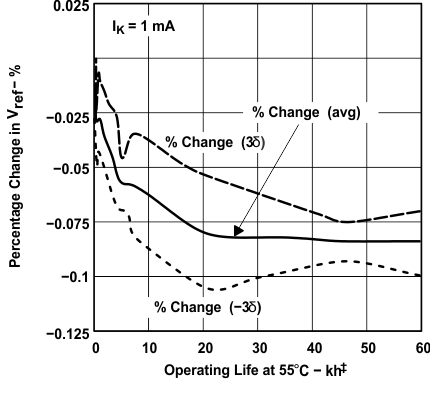
| ‡ Extrapolated from life-test data taken at 125°C; the activation energy assumed is 0.7 eV. |
Operating Life at 55°C
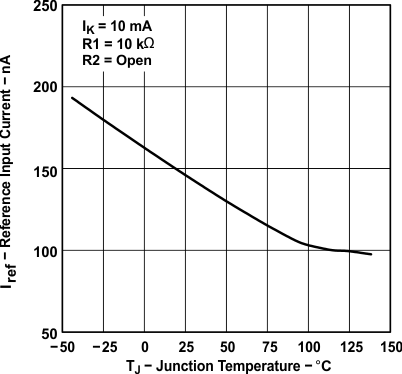 Figure 2. Reference Current vs
Figure 2. Reference Current vs Free- air Temperature (TLV431A)
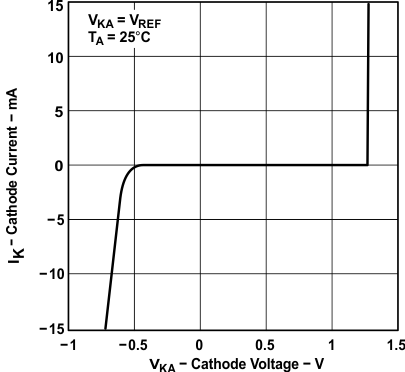 Figure 4. Cathode Current vs
Figure 4. Cathode Current vs Cathode Voltage
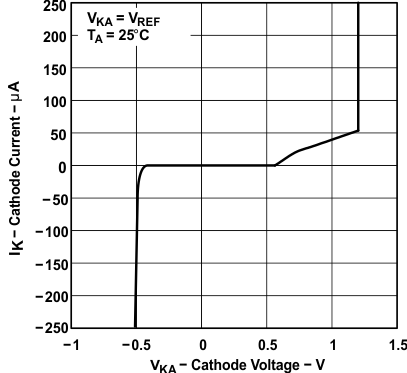 Figure 6. Cathode Current vs
Figure 6. Cathode Current vs Cathode Voltage
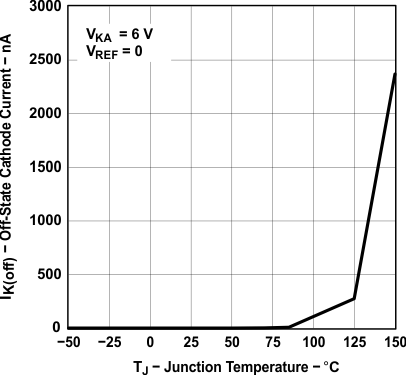 Figure 8. Off-State Cathode Current vs
Figure 8. Off-State Cathode Current vs Junction Temperature for TLV431B
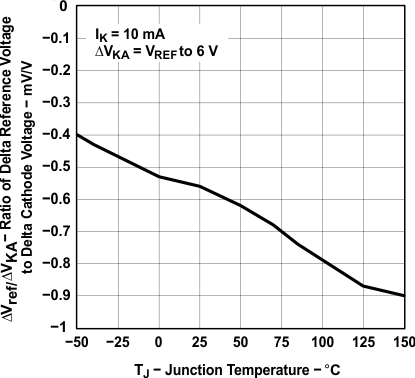 Figure 10. Ratio of Delta Reference Voltage to
Figure 10. Ratio of Delta Reference Voltage toDelta Cathode Voltage vs
Junction Temperature (for TLV431B)
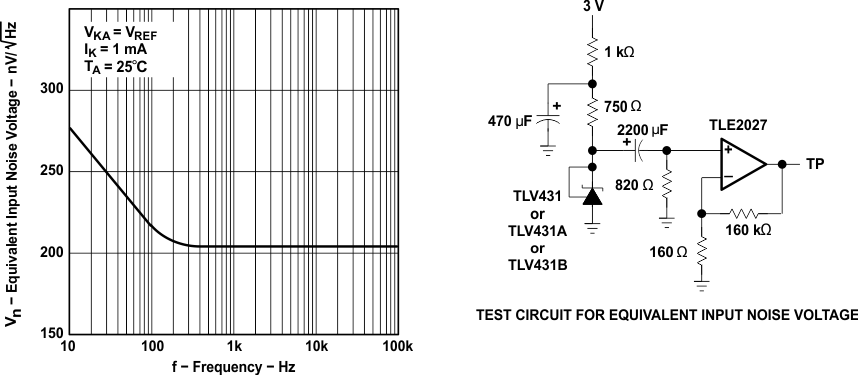 Figure 12. Equivalent Input Noise Voltage
Figure 12. Equivalent Input Noise Voltage
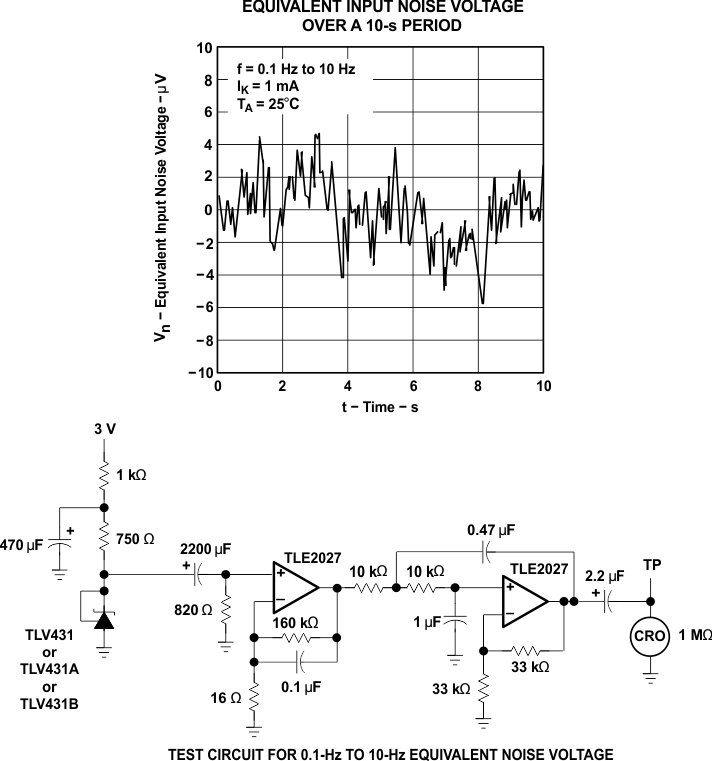 Figure 13. Equivalent Noise Voltage
Figure 13. Equivalent Noise Voltageover a 10s Period
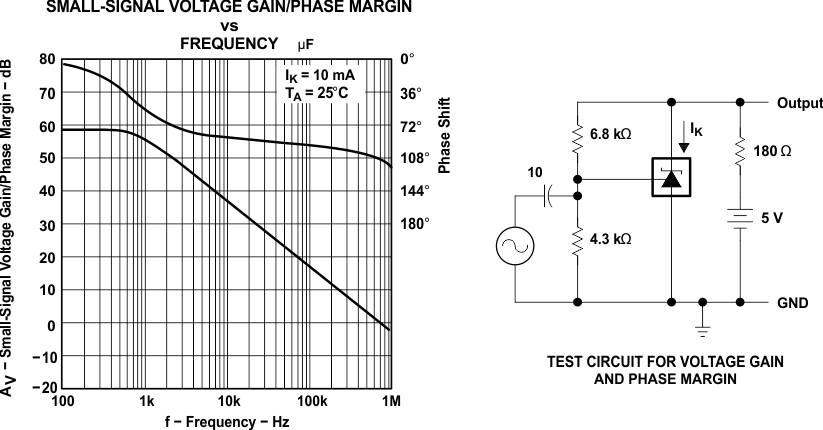 Figure 14. Voltage Gain and Phase Margin
Figure 14. Voltage Gain and Phase Margin
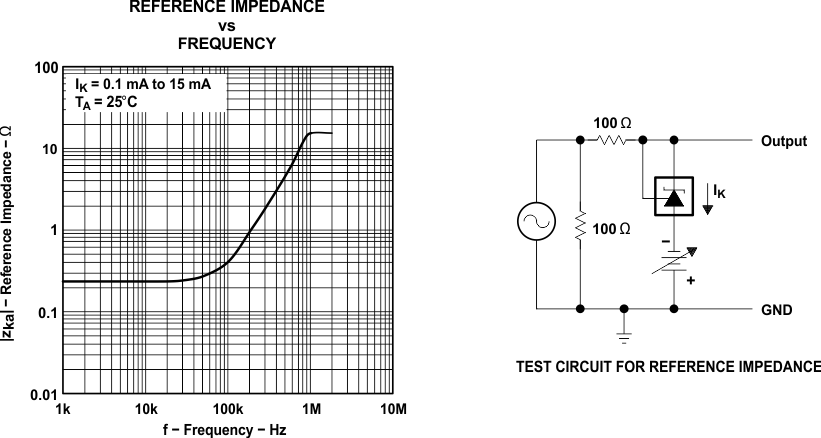 Figure 15. Reference Impedance vs Frequency
Figure 15. Reference Impedance vs Frequency
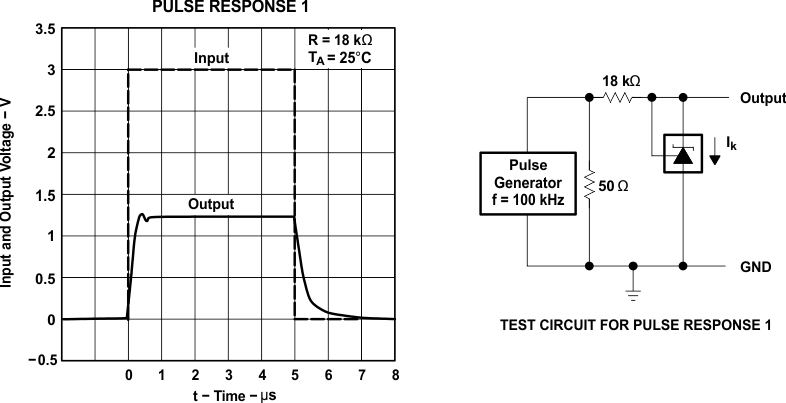 Figure 16. Pulse Response 1
Figure 16. Pulse Response 1
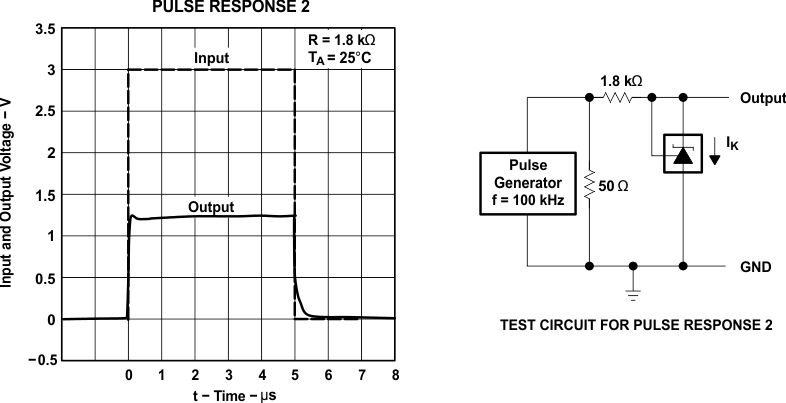 Figure 17. Pulse Response 2
Figure 17. Pulse Response 2
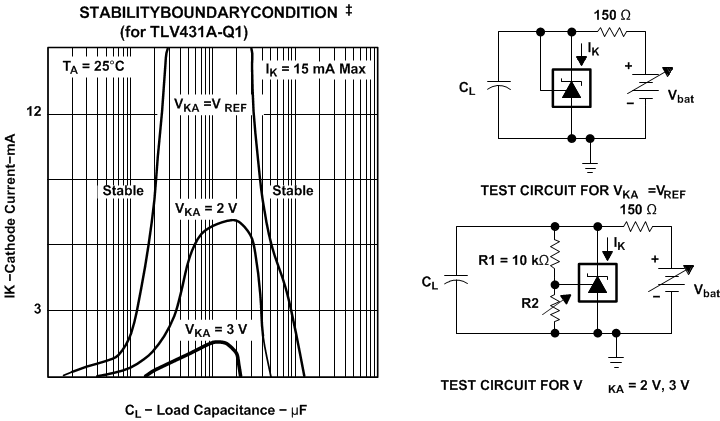
‡ The areas under the curves represent conditions that may cause the device to oscillate. For VKA = 2-V and 3-V curves, R2 and Vbat were adjusted to establish the initial VKA and IK conditions with CL = 0. Vbat and CL then were adjusted to determine the ranges of stability.
Figure 18. Stability Boundary Conditions
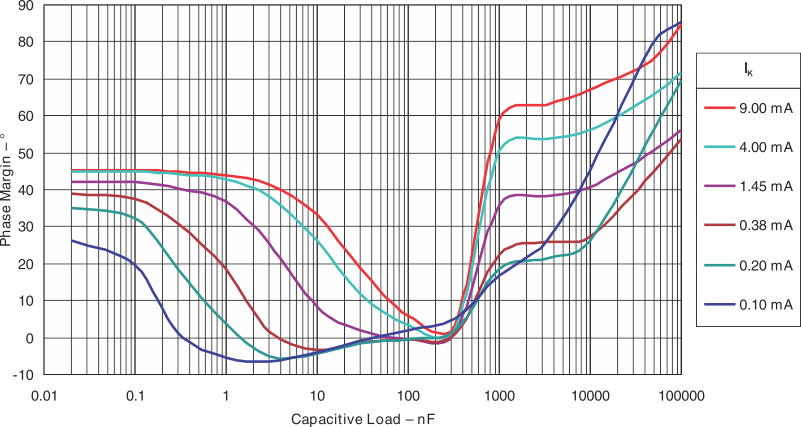 Figure 19. Phase Margin vs Capacitive Load VKA = VREF (1.25 V), TA= 25°C (For TLV431B-Q1)
Figure 19. Phase Margin vs Capacitive Load VKA = VREF (1.25 V), TA= 25°C (For TLV431B-Q1)
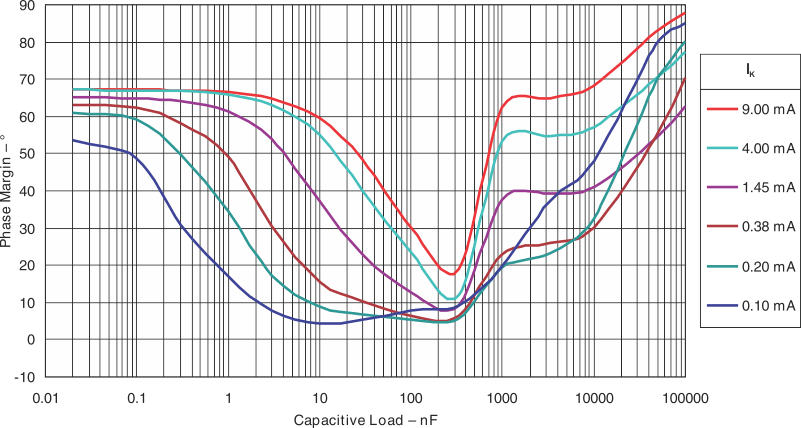 Figure 20. Phase Margin vs Capacitive Load VKA = 2.50 V, TA= 25°C (For TLV431B-Q1)
Figure 20. Phase Margin vs Capacitive Load VKA = 2.50 V, TA= 25°C (For TLV431B-Q1)
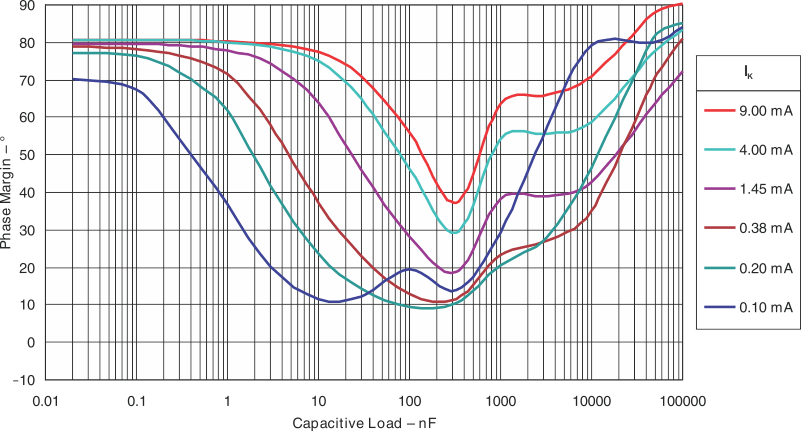 Figure 21. Phase Margin vs Capacitive Load VKA = 5.00 V, TA= 25°C (For TLV431B-Q1)
Figure 21. Phase Margin vs Capacitive Load VKA = 5.00 V, TA= 25°C (For TLV431B-Q1)